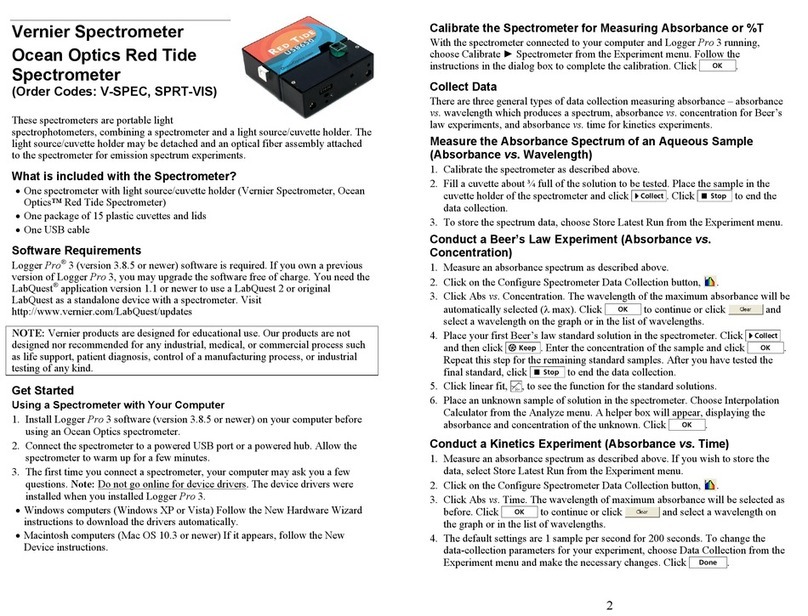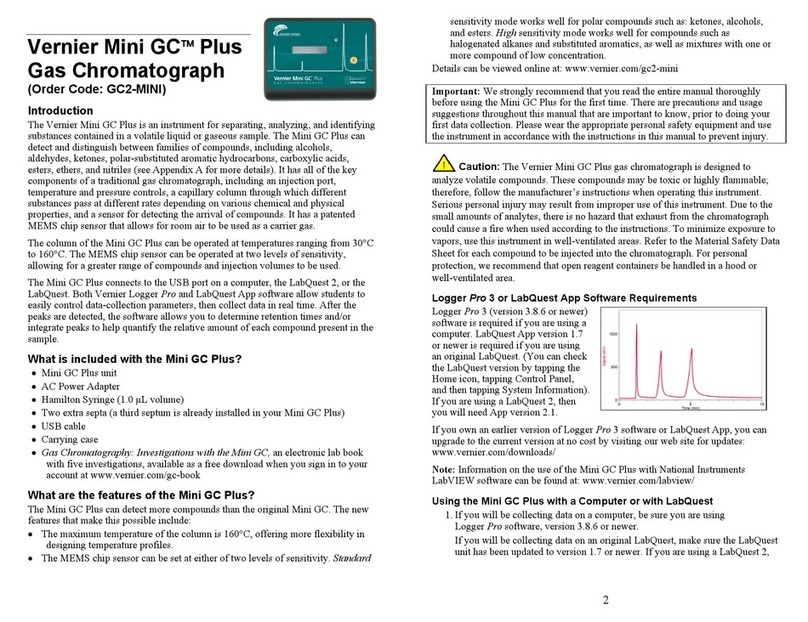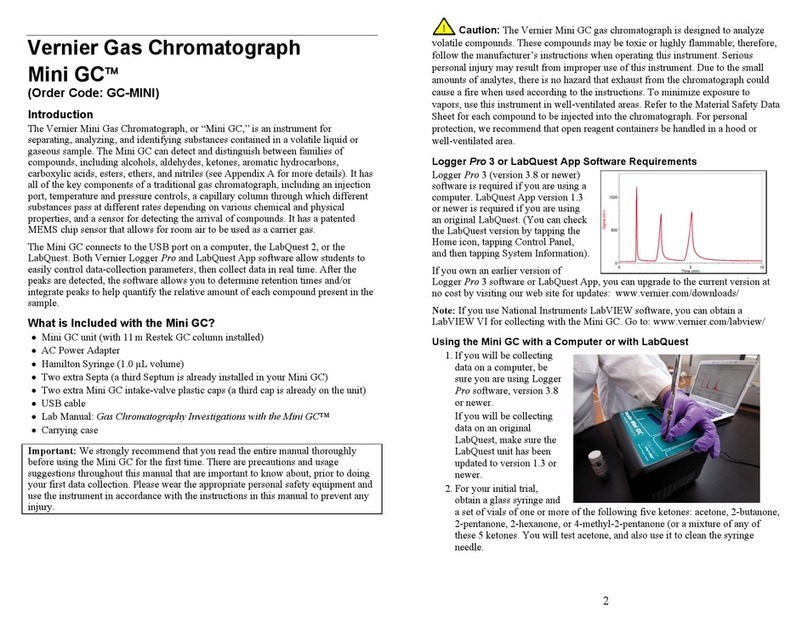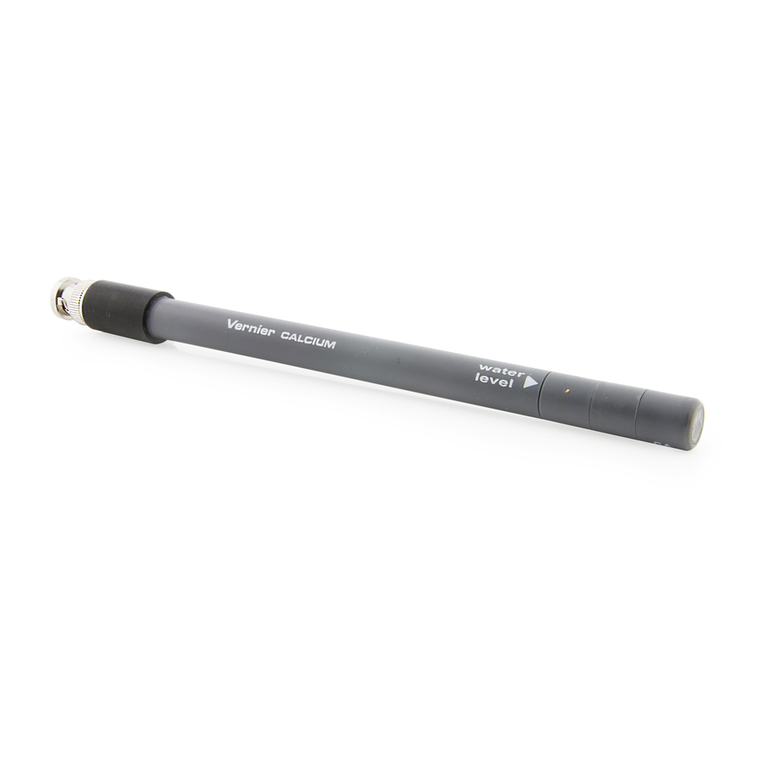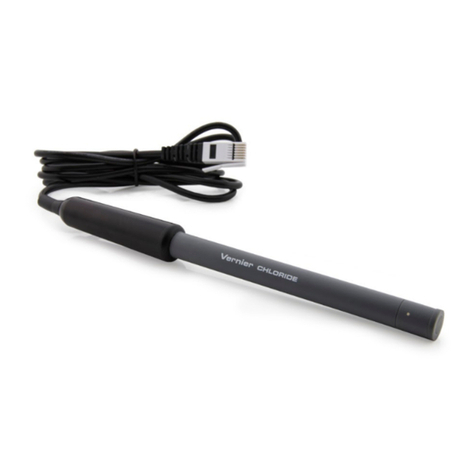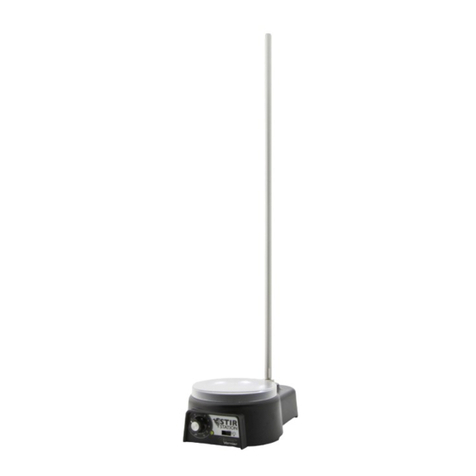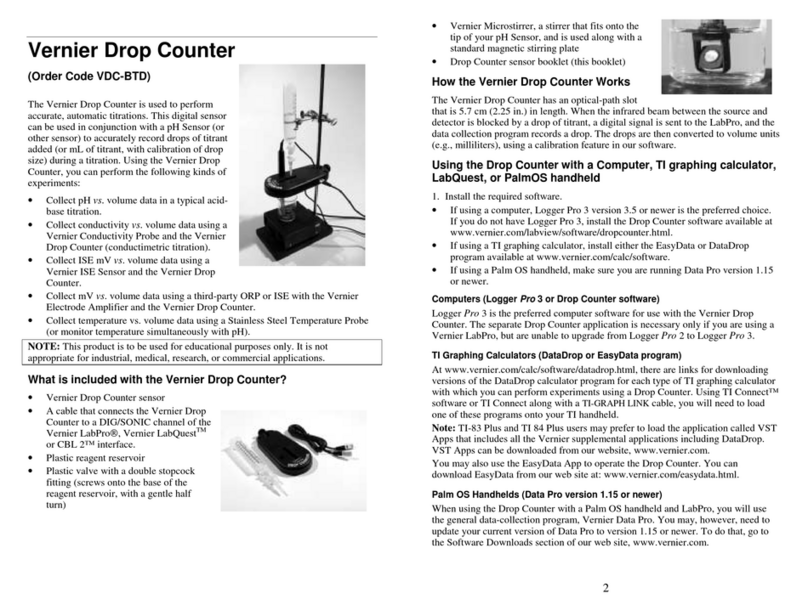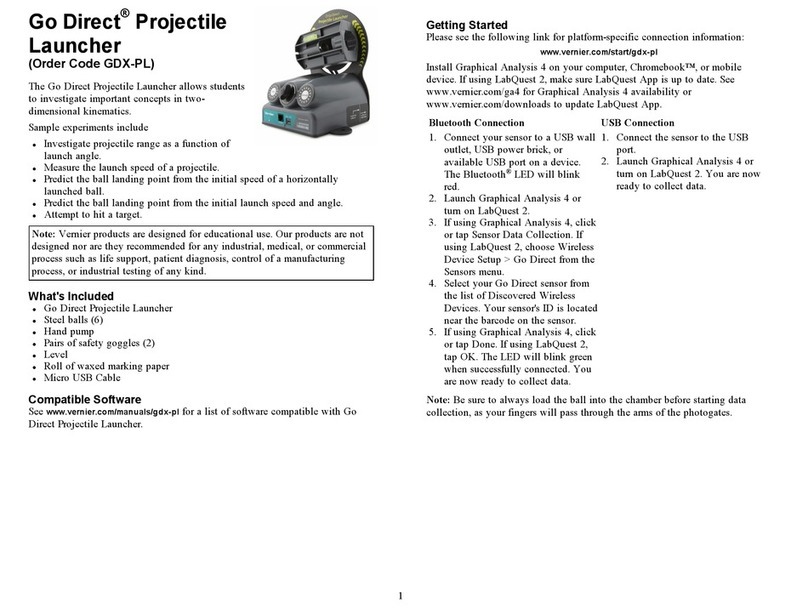4. Add the solution to be titrated to the 100 mL beaker. For this example, use
about 5 mL of 0.1 M HCl solution. Add enough distilled water so the solution
level covers the bulb of the pH Sensor (about 35 to 40 mL). If you are going to
use a small magnetic stirring bar, less distilled water will be required
(about 1 to 20 mL). Turn on the magnetic stirrer. Important: Minimizing
volumes of solution titrated and maximizing stirring efficiency will
significantly improve your titration results.
5. Connect the sensor following the steps in the Getting Started section of this
user manual.
6. No data will be collected until the first drop falls through the Drop Counter.
Carefully center the spout of the reagent reservoir to allow the drops to pass
through the Drop Counter. Completely open the lower 2-way valve (the upper
valve should still be set to a slow drop rate). You will now see pH vs. volume
data being plotted on a graph. When you are satisfied that the titration has
proceeded past the equivalence point, shut off the lower 2-way valve of the
reagent reservoir and stop the data collection.
Videos
View videos related to this product at www.vernier.com/vdc-btd
Calibration
There are three different ways to handle the reporting of volume:
Use the stored calibration.
Manually enter a drops/mL ratio value. If you have done a previous calibration
with a particular apparatus, you can enter the drops/mL ratio.
Perform an Automatic drops/mL calibration. You can calibrate the reagent
reservoir or a buret. To perform your own drops-per-mL calibration, follow
these steps:
1. Place a 10 mL graduated cylinder below the slot of the Drop Counter.
2. Fill the reagent reservoir about 3/4 full with the titrant solution.
3. Choose to calibrate the Drop Counter in your data-collection program.
4. Open the bottom 2-way (on-off) valve to begin releasing drops through the
Drop Counter.
5. Release drops until there is 9–10 mL of liquid in the graduated cylinder.
6. Close the bottom valve to stop the drops.
7. Type the exact volume, to the nearest 0.1 mL, of liquid in the graduated
cylinder in the Volume (mL) box of the Calibrate drops dialog box.
8. Choose to stop the calibration routine of your program.
9. The number of drops/mL will be displayed.
10. You can now continue with the titration.
How the Sensor Works
The sensor has an infrared LED emitter on one end of the area through which the
drop falls (1.3 × 3.7 cm) and a detector on the other end. When the infrared beam
(centered at 890 nm) between the source and detector is blocked by a drop of
titrant, a digital signal is sent to the data-collection interface.The drops are then
converted to volume units (e.g., milliliters) in the data-collection program. A red
3
LED indicator light flashes each time a drop of liquid passes through the Drop
Counter.
Troubleshooting
Set a slow drop rate. For the best, most accurate data, we recommend setting
the rate at 2 seconds/drop or slower. A slow rate provides enough time for each
drop of titrant to be thoroughly mixed in the solution and the pH sensor (or
other sensor) to respond.
Minimize the volume of solution to be titrated. We recommend 5–10 mL of
test solution. Larger volumes will take longer to mix and may require a very
slow drop rate for best results.
Use the Vernier Microstirrer. It helps deliver solution directly to the pH bulb,
minimizing the response time. Also, you can run a magnetic stirrer at a very
high speed and the Microstirrer will not form a visible vortex, which prevents
splashing.
Add only as much distilled water to the titrated solution as is necessary to
cover the bulb of the pH Sensor (or other sensor).
Use the plastic reagent reservoir that is supplied with the Drop Counter. The
reagent reservoir provides a wider diameter and less change in the hydrostatic
pressure per unit volume of titrant above the 2-way valve.
Use the pair of 2-way valves; one for drop rate adjustment and the other as an
on-off valve. This eliminates the need to do a fine adjust during the initial
readings and also allows for a consistent rate to be set.
Manually release drops at a slower rate to allow for more thorough mixing
when near the equivalence point.
Use the Vernier Drop Counter with other Vernier sensors such as our Ion-
Selective Electrodes, Conductivity Probe, or older Vernier pH Sensors that do
not auto-ID. The Vernier Drop Counter can accommodate many third-party
electrodes when used in conjunction with the Electrode Amplifier.
Simultaneous pH and temperature readings can also be taken while using the
Drop Counter.
Repair Information
If you have watched the related product video(s), followed the troubleshooting
steps, and are still having trouble with your Vernier Drop Counter, contact Vernier
Technical Support at support@vernier.com or call 888-837-6437. Support
specialists will work with you to determine if the unit needs to be sent in for
repair. At that time, a Return Merchandise Authorization (RMA) number will be
issued and instructions will be communicated on how to return the unit for repair.
Accessories/Replacements
Item Order Code
Reagent Reservoir, 2 Valves, and Tip VDC-RR
Microstirrer MSTIR
Stopper Stem PS-STEM
Plastic 2-Way Valve PS-2WAY
4
